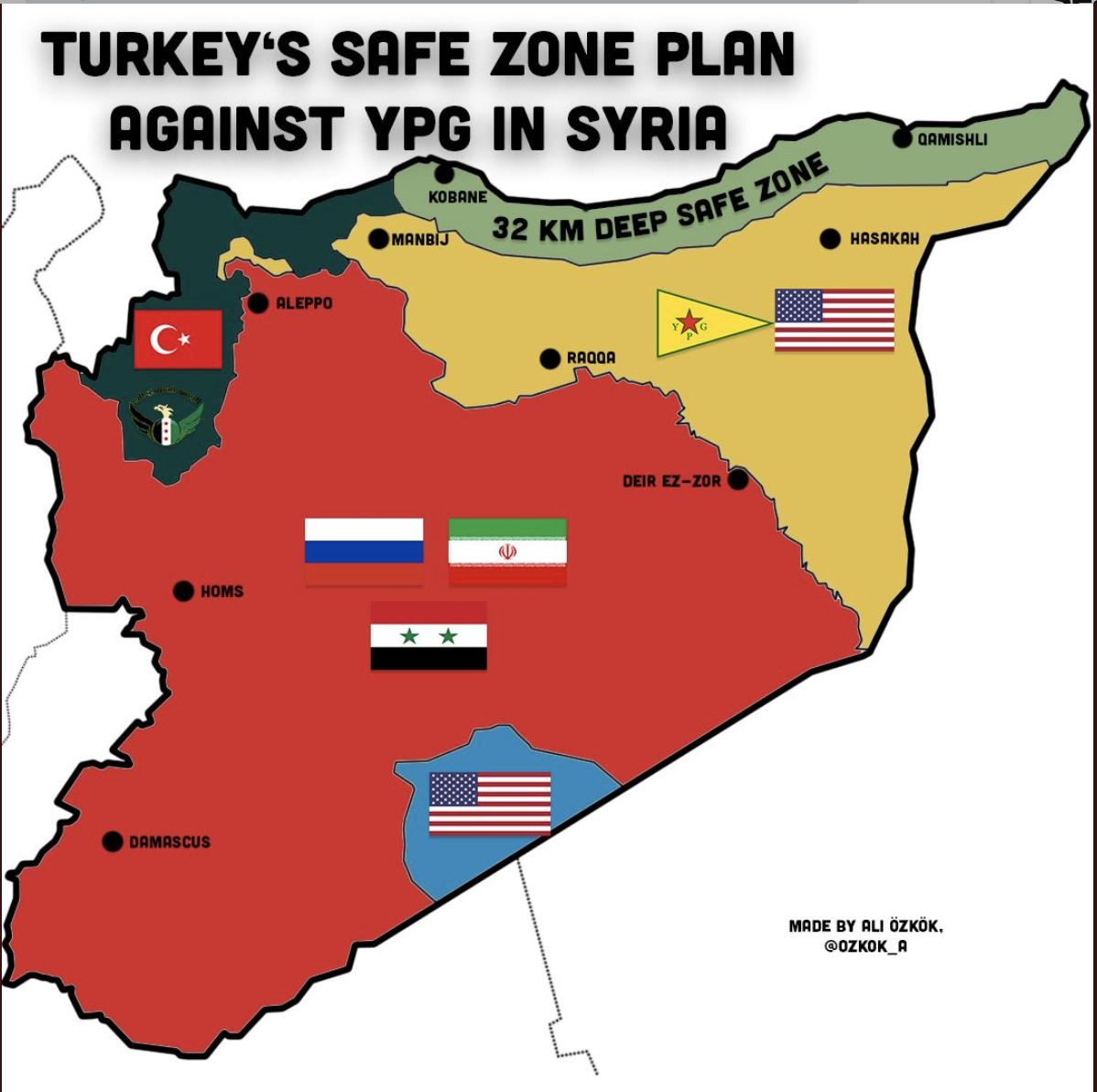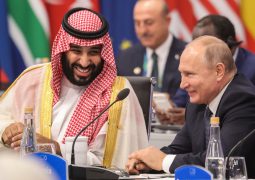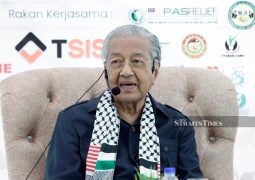Can the Turkey-US agreement on Syria arise from a graveyard of broken promises?


The history of Ankara and Washington’s dispute over Syria is full of U.S. promises that were not kept. That is why Turkey is ready, but is also very cautious to welcome a final agreement that will set up a joint operation center
Turkey and the U.S. agreed on Aug. 7 to establish a joint operation center for northern Syria. In two similar statements, both governments said that the military delegations met at the Turkish Ministry of Defense on Aug. 5-7, and after negotiations, they reached an agreement to immediately implement initial measures to address Turkey’s security concerns, a rapidly formed joint operations center in Turkey to coordinate and manage the establishment of the safe zone together.
In addition, both countries maintained that the safe zone in question will become a “peace corridor” and every effort will be made to help displaced Syrians return home.
The ‘peace corridor’
The peace corridor term was first used in a statement by the Turkish National Security Council (MGK) that gathered on July 30 under the chairmanship of President Recep Tayyip Erdoğan. The statement said, “As the authority gap along the Syrian border increases the threats towards our country, we confirm our determination that the region will be cleansed of all terrorist elements and that all efforts will be made to build a peace corridor.”
“Turkey’s sensitivity and expectations concerning strategic partnership, defense and security were put into words; in accordance with the essence of the NATO agreement and bilateral agreements, our country complies with the scope of international law and pacte sunt servanda (agreements must be kept); the same sensibility is expected from our allies,” the MGK statement added.
Following the MGK statement, President Erdoğan reiterated his vow on Syria and said on Aug. 4 that Turkey will launch an operation to cleanse northern Syria of terrorists, namely the outlawed PKK’s Syria branch, the People’s Protection Units (YPG). Erdoğan has repeatedly warned the U.S. about a Turkish offensive against the U.S.-backed YPG east of the Euphrates River after two previous operations in Syria between 2016 and 2018. As the long-standing diplomatic negotiations did not reached any solution, Erdoğan had to remind once again to form a safe zone and said that Turkey will intervene alone if the strategic partner of Turkey, the U.S., would not come up with an amicable offer. The Special Representative for Syria Engagement and Special Envoy for the Global Coalition to Defeat ISIS [Daesh] Ambassador James Jeffrey has become a frequent visitor to Ankara this year, and I lost count of how many times he came and returned to Washington after many discussions with no concrete results.
Two days after Erdoğan’s latest words about a Turkish intervention waiting at the door, the military delegations of the two countries sat at the table to bring an end to the conflict. Even though both countries released similar statements about the agreement following the tough negotiations, they gave us little detail about what kind of a road map exactly was agreed upon, such as the size of the safe zone; and yet, there is a new stage in front of us. Turkey is determined that the depth of the security zone in northern Syria will be 30-40 kilometers. Ankara also insists that the U.S. should seize weapons from the Democratic Union Party (PYD) and YPG terrorists. Besides, the zone in question has to be 460 kilometers long along the Syrian border with Turkey. According to diplomatic sources in Ankara, the safe zone must have two parts: The first part will start from the Iraqi-Syrian border to Qamishli since Syrian regime forces currently control the city, and the second from Qamishli extending to Jarablus, the Syrian town that was liberated from Daesh by Turkish Armed Forces and the Free Syrian Army in 2016. We don’t know if the U.S. has accepted these demands of Ankara yet. In addition, we don’t know if the city of Manbij, still controlled by PYD/YPG terrorists, is a part of the agreement. Other than that, the other question is if Turkey will solely control the safe zone as it has argued since the beginning to avoid some disaster like the Srebrenica massacre in 1995 where more than 8,000 civilians lost their lives under the watch of NATO forces, which were supposed to defend civilians. There are too many other unanswered questions, such as who will be the neighbor of the peace corridor in question in the south, but let’s stop here for now.
Nevertheless, it looks like the U.S. temporarily averted a Turkish military offensive against the YPG, the Syrian wing of the PKK, which is responsible for around 40,000 deaths in the last 40 years and designated as a terrorist organization not only by Turkey but also the U.S. as well. To move the new project forward, a delegation of six members of the U.S. military personnel in the 3rd regimental command have arrived in the district of Akçakale of Turkey’s Şanlıurfa province on the Syrian border along with 90 U.S. personnel this week, followed by deputy commander of the U.S. European Command’s deputy commander’s visit to Şanlıurfa. Yesterday, Defense Minister Hulusi Akar and the commanders of the Turkish Armed Forces went to Şanlıurfa for inspections with regards to the joint operation center to be established. It is worth noting that Turkey started operating with drones in northern Syria this week where Washington and Ankara agreed to establish a peace corridor.
This is a good start but not enough. Rapid action by the U.S. for coordinated activities is expected to begin soon as Turkey has already reached the end of its rope. Turkish analysts and even Turkish society haven’t welcomed the agreement yet as they have come across many unfulfilled American promises in the recent past. They ask if the U.S. will really keep its promises this time and start coordinating as soon as possible. Or “will the U.S. stall the promised measures over a long period of time once again?” Seriously, will that be the latest broken promise from the U.S?
According to a Turkish Defense Ministry statement, Turkey has not changed its stance over the details of the peace corridor. Denying reports that Ankara has adopted a different strategy, it said that they do not reflect the truth. As stressed many times before, Turkey is ready to intervene northern Syria alone and will not delay its third intervention; and it will happen if the coordination with the U.S. doesn’t work.
Although it seems that Ankara’s first reaction to the agreement is positive, no doubt Turkish military and diplomatic circles are as cautious as the rest of Turkey. Even if implementation of the agreement starts soon, Ankara will surely ask whether or not Washington will stop insisting on a much narrower area (five kilometers depth) for the peace corridor. Another question is if the U.S. will finally stop arming the PKK/YPG.
The loss of trust
For a long time, Turkey has lost trust and confidence in its ally after too many broken promises. Relations between the two are at a low point, even though Turkey is one of the most important strategic allies of the U.S. in the region. Among many issues that they can’t agree on, Syria has primary importance, and the U.S. has given a lot of promises Turkey in the last six years, which were not kept.
Starting with Obama’s desire to overthrow the Syrian butcher Bashar Assad and then changing his mind, or his famous “red line” over chemical weapons that were used many times in Syria, almost completely by regime forces; no need to say that he changed his mind again and broke his promise in 2013 after the Ghouta massacre where around 1,700 civilians died. While applauding Ankara for hosting many refugees and promising that his country and the West would help Turkey carry this burden, this never happened. Obama was supposed to support the Free Syrian Army on the ground to make Syria united again after Assad left his position. There was a Syrian Train and Equip Program on the table led by the U.S., which was launched in 2014 to train selected Syrian opposition forces inside Syria to fight Daesh. That also never happened. At the end of the day, Syrian opposition forces became weakened against Daesh and the Assad regime, since they didn’t get even one bullet from their so-called allies in the West, and Obama started to say that the most organized group on the ground to fight Daesh was the PKK’s Syrian affiliate YPG terrorists. Finally, the U.S. started to send tons of arms and ammunition to the YPG, a part of which were carried to Turkey via tunnels by the PKK to resume its terror activities in Turkey.
Another example: Even before Turkey carried out two ground operations in Syria, U.S. officials were already aware of Turkey’s red line that the YPG should not step a foot west of the Euphrates River. President Erdoğan has been stressing this red line since late 2015.
Ankara’s tolerance
Turkey tolerated an SDF-led offensive to seize south of Manbij in December 2015, on the condition that the forces holding Manbij would be the locals. Ankara accepted to live with the U.S.-backed YPG entering Manbij to fight Daesh with around 300 members of U.S. Special Forces. However, its condition was that the YPG would leave Manbij after the city was cleansed of Daesh and Manbij left to its residents, which U.S. officials agreed to. However, the YPG never left. Obviously, the U.S. overlooked the PKK’s desire to found a corridor through the Syrian-Turkish border, which would be a PKK-ruled statelet afterwards. Obama’s Vice President Joe Biden was in Ankara when the first Turkish intervention, Operation Euphrates Shield, started, and he clearly said: “No [PKK] corridor, period. No separate entity on the Turkish border; a united Syria. We have made it absolutely clear to the elements that were part of the Syrian Democratic Forces, the YPG that participated, that they must move back across the river. They cannot, will not, and under no circumstances get American support if they do not keep that commitment, period.”
Again, on September 2016, during G-20 summit in China, Obama accepted withdrawing YPG terrorists east of the Euphrates. But that also never happened.
In February 2018, Turkey and the U.S. issued a joint statement that said they would work together to overcome their differences starting with northern Syria, with both sides committed to working for each other’s security and defense, as weeks of high-level meetings were held in Ankara and Washington. The then-U.S. Secretary of Defense Rex Tillerson promised that the two countries would become and act together and resolve the issues that had reached a crisis point. The biggest issue on the table was again the U.S. backing and arming YPG terrorists in Syria. What happened then? Trump fired Tillerson in a couple of days, and his successor Mike Pompeo chose to swing the lead.
On June 4, 2018, Foreign Minister Mevlüt Çavuşoğlu and the U.S. Secretary of State Pompeo met in Washington, and discussed a road map on Manbij. Çavuşoğlu and Pompeo also met in Brussels and discussed Operation Olive Branch and other issues. Turkish and U.S. forces started joint patrols in Manbij, but there was no second step to remove the YPG.
The withdrawal decision
Shall we talk about President Donald Trump’s decision to withdraw U.S. troops from Syria earlier this year? Even though that decision traumatized many PKK sympathizers in Washington, Turkish and American forces were about to work to coordinate the status of eastern Syria after the withdrawal; but again it didn’t happen.
That list will grow longer and longer if I continue, but I think you get the point. The history of Ankara and Washington’s dispute over Syria is full of U.S. promises that were not kept. That is why Turkey is ready to welcome a final agreement that will set up a joint operation center which will really work and reach the final destination, but it is very cautious after being stabbed in the back so many times.
- Previous Russia’s New Stealth Bomber to Make Maiden Flight Outside Moscow in 2025-26
- Next President Trump fires new salvos in US-China trade war











